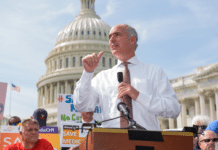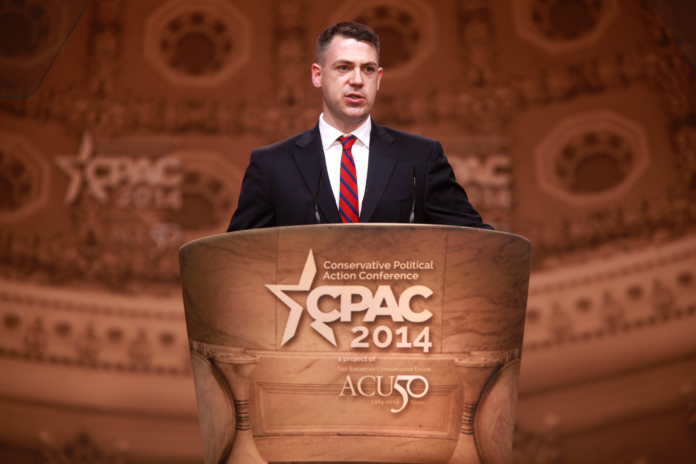In 2016, Donald Trump made one of the most important promises of his campaign: Elect me, and I will enforce federal obscenity laws to stop the explosion of obscene pornography online. Mr. President: Your administration has made tremendous progress in keeping campaign promises to affirm the right to life and the rights of conscience. Now you have a chance to keep yet another promise.
Two weeks ago, I and three other congressmen sent a letter to U.S. Attorney General William Barr, reminding him of Trump’s campaign promise and urging the Department of Justice to make enforcing obscenity laws a priority. We are in an unprecedented era of convenience. With a few simple clicks, anyone connected to high-speed Internet can book a doctor’s appointment, or order a meal and expect it to arrive on their doorstep within minutes. But there is a dark side to this convenience. Anyone connected to the Internet—including children—has on-demand access to billions of photos and videos of not just sex, but rape (real and dramatized), violent sex, and debased fetishes.
The prevalence of pornography in our society has consequences, especially for our children. It’s time to start talking about it, and it’s time for the government to get involved.
As online obscenity and pornography consumption have increased, so too has violence toward women. This is not surprising, given that multiple studies have shown that consuming pornography affects the way the brain reacts to stimuli such as violence. The overall volume of human sex trafficking has also increased; it is now the third-largest criminal enterprise in the world. Child pornography is one of the fastest-growing online industries, with an annual revenue of over $3 billion. According to the Association of Sites Advocating Child Protection, the United States has nearly 50 percent of all commercialized child pornography websites.
Given the ubiquity of pornography in our culture, what does this mean? It means our children, some as young as eight, are being exposed to obscene material, often by accident. Nine in every ten boys under the age of eighteen have seen pornography. Children are stuggling with pornography addiction. The era where one had to sneak into theaters, purchase Playboy magazines, or pay for pay-per-view to access pornography is long gone.
As the father of three young children (who are approaching the ages at which many children are now exposed to porn for the first time), I am extremely concerned that parents do not have the resources necessary to effectively police their child’s exposure to shocking pornographic materials. What can be done? Fortunately, U.S. obscenity laws exist that, if enforced, can at least partially solve this problem. Barr knows this, given his success in effectively shutting down the pornography industry and dramatically decreasing child pornography in America when he served under President George H. W. Bush.
Those laws prohibit distribution of obscene pornography: on the Internet, on cable/satellite TV, in hotels/motels, in retail or wholesale establishments, and by common carrier. Yet the enforcement of these laws was stopped by the Obama Administration when Attorney General Eric Holder disbanded the Obscenity Prosecution Task Force in the Criminal Division.
Barr can reverse this action, and declare the prosecution of obscene pornography a criminal justice priority. He can direct U.S. attorneys to investigate and bring prosecutions against the major producers and distributors of such material. He can make obscenity prosecution a defining issue of the Trump-era DOJ. These are simple yet important steps toward protecting the lives of those affected by these long-ignored crimes.
It is time for Trump to tick off another campaign promise and protect our nation’s children from pornography. Not long before announcing his candidacy, while speaking about the former administration and the problems it ignored, Trump claimed he “would fix [the problems] fast” if he were president. It was a good promise, Mr. President: Now let’s fix the pornography problem.
Jim Banks is the U.S. Representative for Indiana’s third congressional district.
Photo by Gage Skidmore via Creative Commons. Image cropped.


















